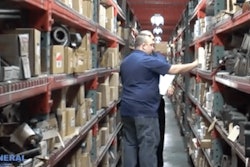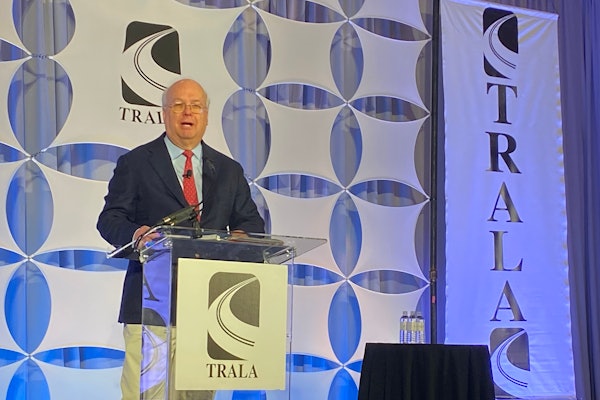
Chad Sorenson, president and founder, Adaptive HR Solutions, addressed numerous issues during Commercial Vehicle Solutions Network’s (CVSN) webinar, “Preparing the Workplace for the New PC — Post Coronavirus.”
Among the many topics discussed, Sorenson stressed the importance of having policies in place (and enforcing them), communication with employees and knowing the specific coronavirus-related requirements in a company’s state and municipality.
“Employees want to feel safe. Employers need to show employees what you’re doing in order to keep them safe. It’s about communication,” he says. “So what are we doing to help make sure we have the right plan? These are some of the things you need to take into consideration.”
Companies should consider screening and/or testing their employees.
“Screening means it’s a … periodic screening of the employee to make sure they don’t have symptoms and they don’t have a fever. The most beneficial way to do that is to do a daily screening,” Sorenson says.
“That means I’m taking your temperature … and then I’m going to ask you a series of questions. I’m going to ask you about those 11 symptoms [the Centers for Disease Control and Prevention (CDC) has identified]. I’m also going to ask if you have been around someone who has tested positive for COVID-19 or has symptoms related to COVID-19,” he says. “If they answer yes, I probably don’t want them in my workplace because they are potentially carrying the COVID virus, whether they’re symptomatic or not.”
Testing is more expensive than screening because after a company buys a thermometer, screening is basically free. Testing involves performing a nasal swab, which then has to be tested.
“How careful do we want to be? Right now there are certain industries that are required to do the testing. Most industries are doing the screening and that’s probably where we need to be,” Sorenson says.
Frequent cleaning of the workplace is important — and employees knowing the company is doing so is just as important to a workforce likely concerned and on edge.
“You have the regular cleaning that happens daily and with high touch points in your offices like light switches, door handles, time clocks, etc., you probably want to clean on a more regular basis — three to five times per day or once an hour. What we’re trying to do is prevent the spread,” he says.
Although the CDC has stated the belief now is, for the most part, coronavirus is not going to be spread through surfaces, “it’s still a good idea to wipe those things down because it shows your employees [the company] is really taking their safety into consideration,” he says.
Should an employee be diagnosed as COVID positive, Sorenson says the best measure for a post-exposure environment is to let the office sit for 24 hours to let the air settle, then have a professional company come in to perform a thorough cleaning.
If there is a case of coronavirus within the workplace, employees who have been in close proximity for a long period of time with that coworker must be notified and the company cannot identify the coworker unless he gives permission. Sorenson suggests getting the permission in writing for legal reasons. According to the CDC, “close proximity” is within six feet without a mask on and the period of time is at least 15 minutes.
Regarding the wearing of masks, Sorenson says to be aware of what is required in the state and city in which the facility resides.
“A judge in Illinois came down on a company because the company had a mask policy but no one was enforcing it. He put out an order that this company must enforce it. If you have a mask policy, make sure your supervisors understand they must enforce that mask policy,” Sorenson says. And make sure they’re wearing them correctly, he adds.
Physical distancing must also be taken into consideration and Sorenson provided some tips. For example, avoid having everyone show up for work at the same time, especially if they need to be screened or tested first. He suggests staggering start times by 30 minutes, allowing some employees to work remotely for at least part of the week, prohibit handshaking and develop a plan for visitors, vendors and customers entering the building.
“A lot of this comes down to how we’re dealing with the employees, making sure they feel comfortable and that we hear their concerns. Their perception is reality,” Sorenson says. For employees who are fearful about being in the workplace, he suggests companies be flexible, be an active listener, show empathy and acknowledge their concerns, understand the legal aspects and come to a resolution.










